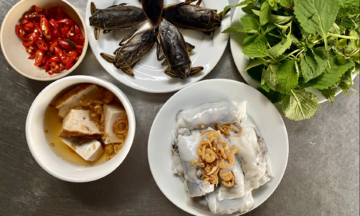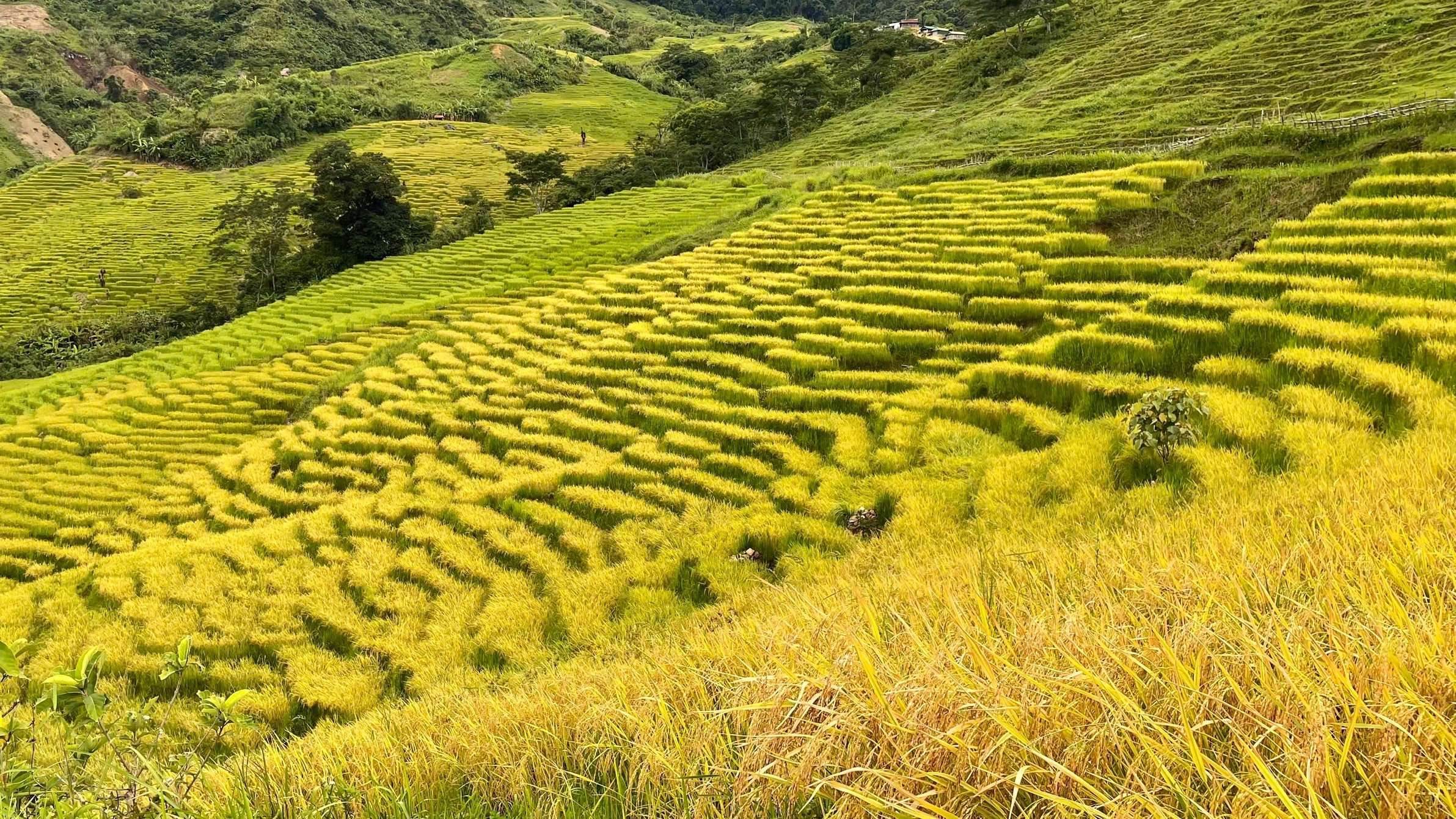 |
More than 100 km from the center of Kon Tum, Ngoc Linh commune is famous for its namesake medicinal ginseng, but few know that it has brilliant golden terraced rice fields at the end of July.
The fields lie on the slopes of Ngoc Linh mountain, the highest mountain range in central Vietnam, located in Quang Ngai and Quang Nam provinces.
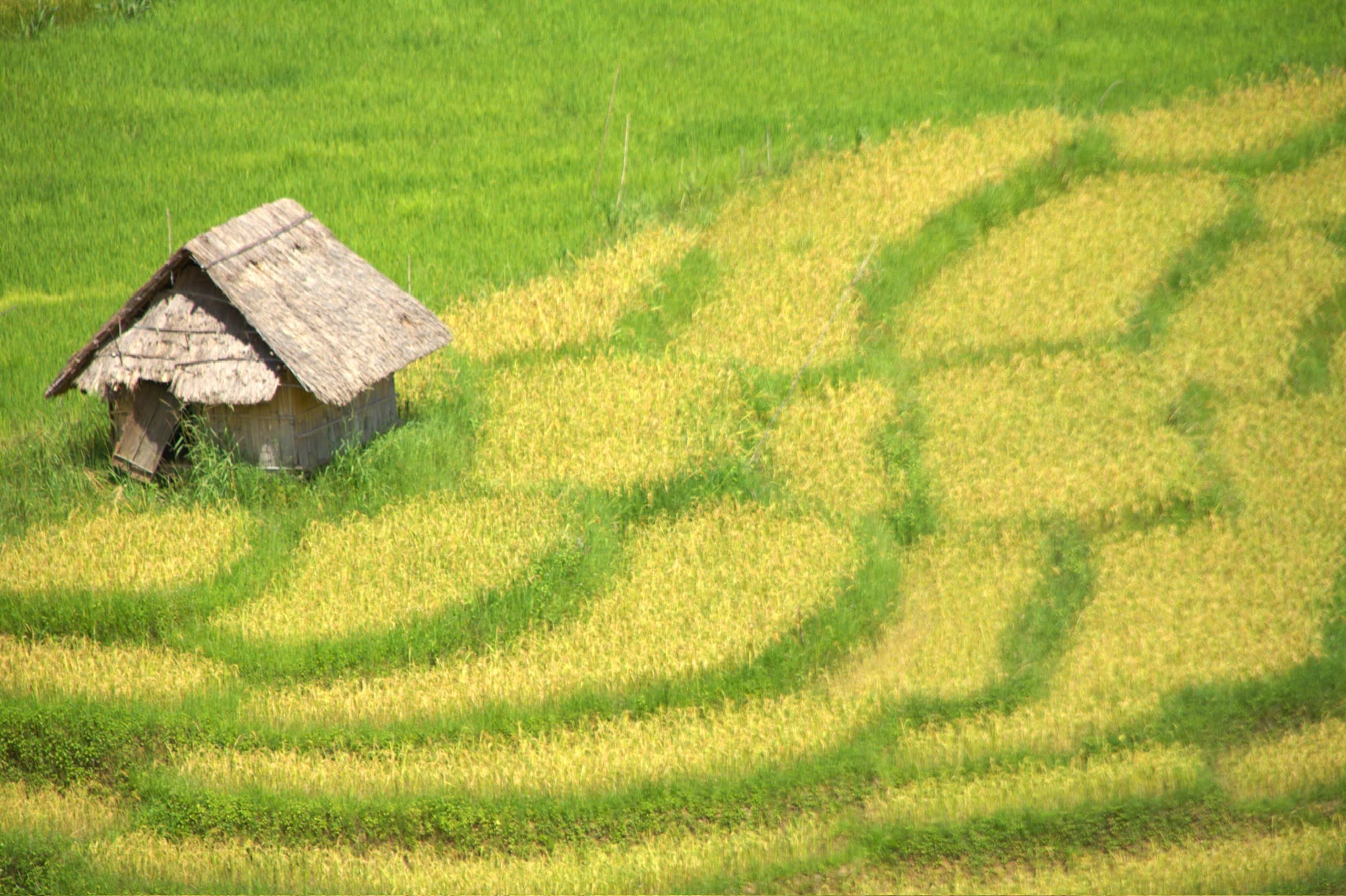 |
Ngoc Linh commune is mainly inhabited by the Xo Dang ethnic group. They often build huts from bamboo and leaves near the fields to rest while farming rice.
The rice season in Ngoc Linh begins in mid-March and lasts until the end of July. Due to the specific natural conditions, the villagers plant only one spring-summer rice crop each year, with a cultivation period of about 4 months, to ensure good rice growth and high yields.
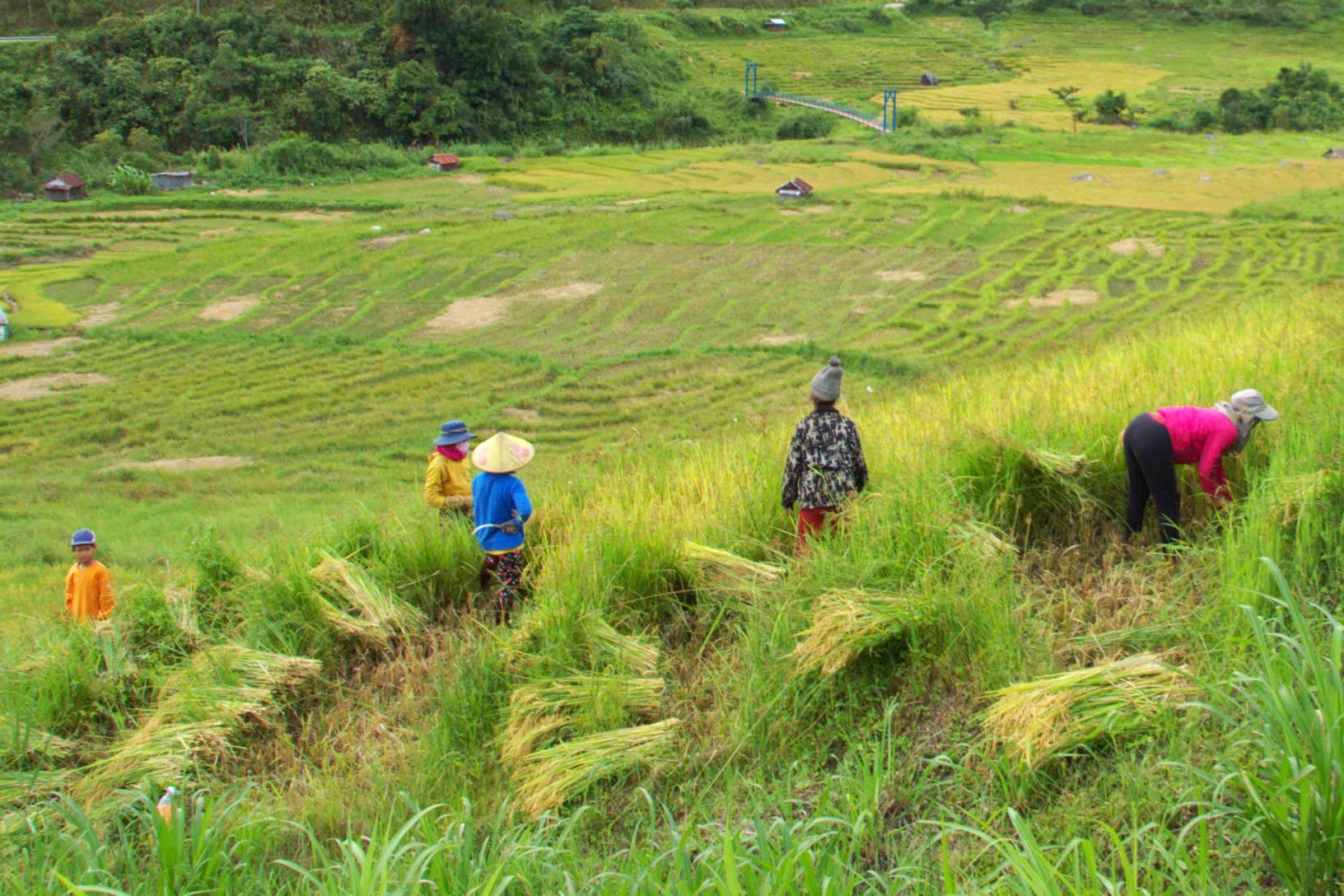 |
The people of Ngoc Linh commune often call on their families and relatives to help each other during the harvest season.
Due to the heavily fragmented terrain, the area of each rice paddy is very small, so the locals cannot use machinery or buffaloes in production. From plowing and transplanting rice to harvesting, everything is done entirely by hand.
 |
People harvest rice with sickles and gather it into bundles.
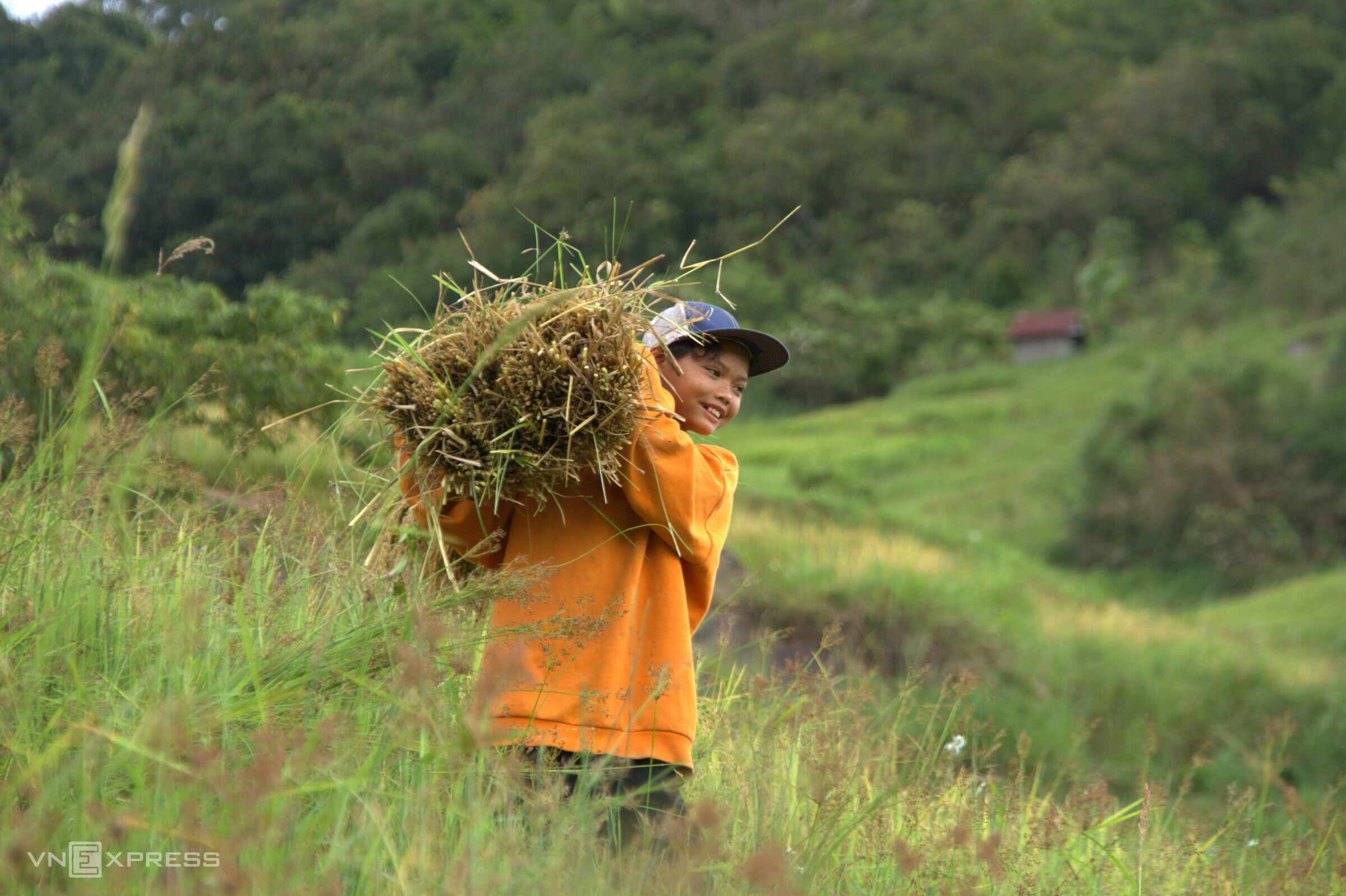 |
A Thai, a 6th grader in Tan Rat village, carries a bundle of rice to the collection point for threshing. A Thai said he was very happy to join his parents in harvesting rice during summer vacation.
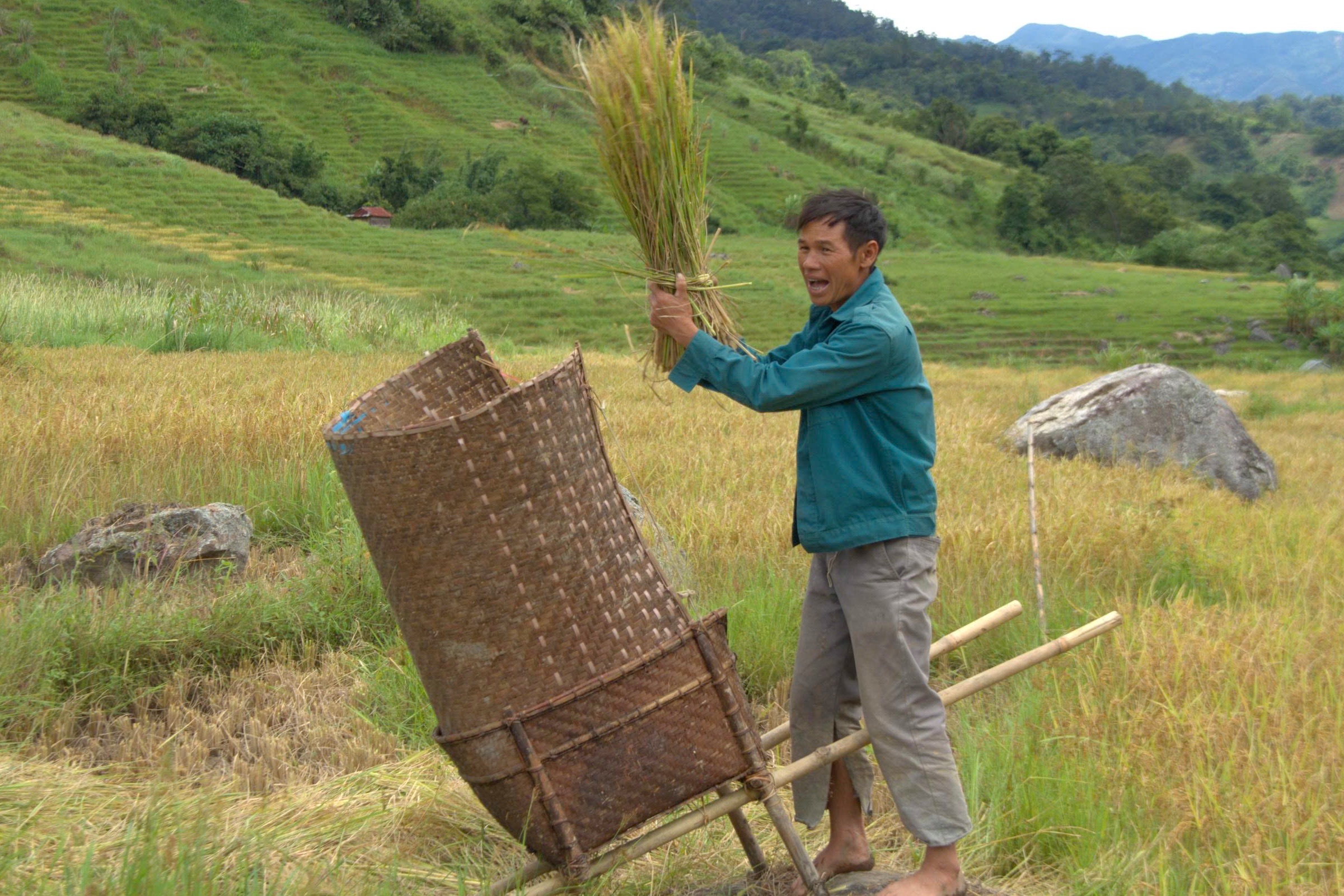 |
After gathering the rice in one place, the villagers thresh it using a "bo" (threshing basket).
Mr. A Bien said the "bo" is made of bamboo and rattan by the Xo Dang people to thresh rice and separate the grains. The "bo" consists of three main parts. The body of the "bo" is a large screen woven from bamboo with a certain flexibility, standing upright like a barrier to prevent rice grains from scattering during threshing. Inside the "bo" is the threshing frame, consisting of sturdy wooden bars arranged parallel horizontally, acting as a floor when people swing the bundles of rice against it, causing the grains to detach from the stalks. The bottom of the "bo" is designed to be concave with a moderate depth, acting as a container for the rice grains after they fall from the stalks. The parts of the "bo" are designed to be detachable for easy transportation, storage, and preservation.
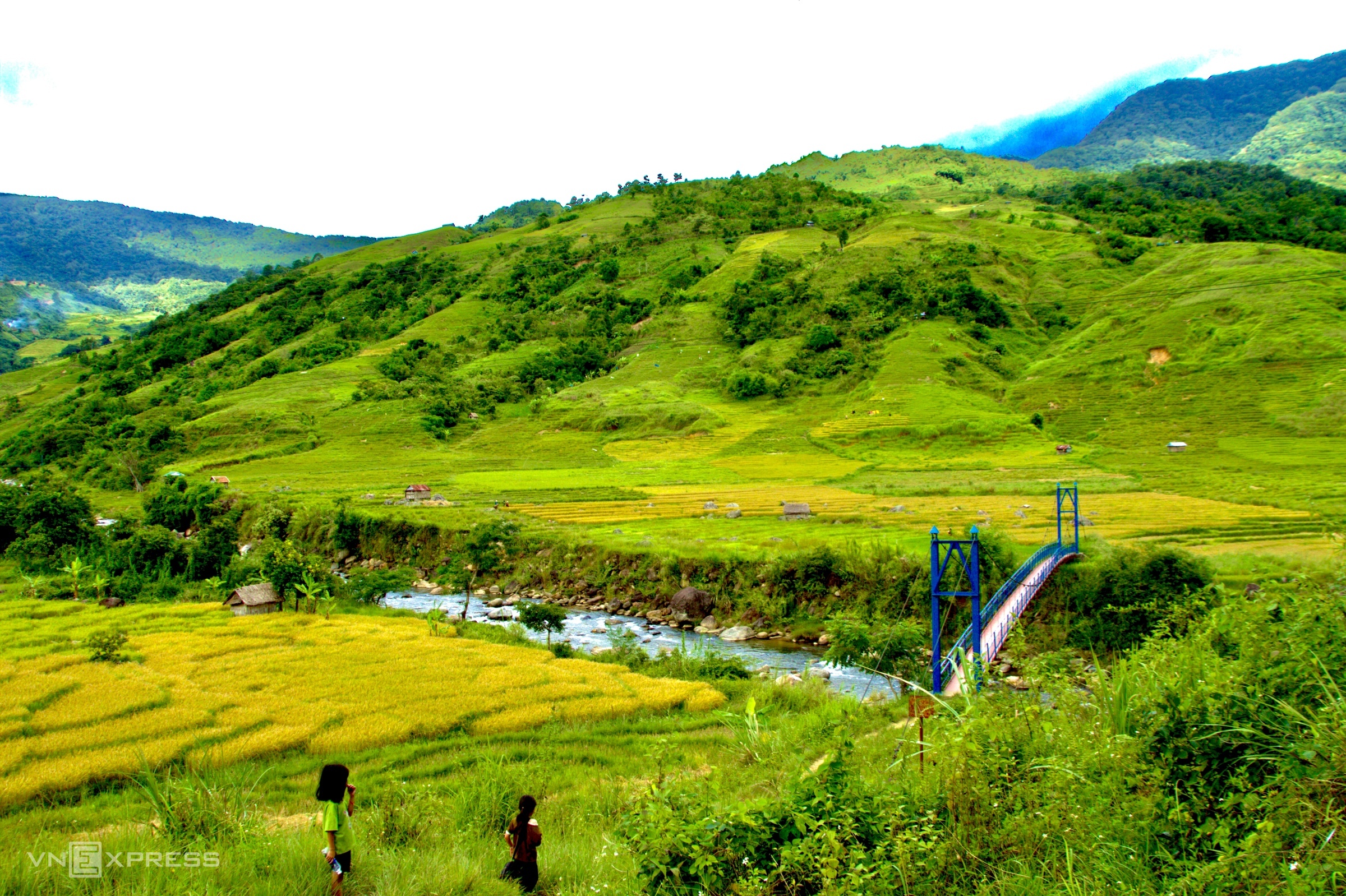 |
The winding mountains surround the rice fields, with streams as the source of water nurturing the terraces.
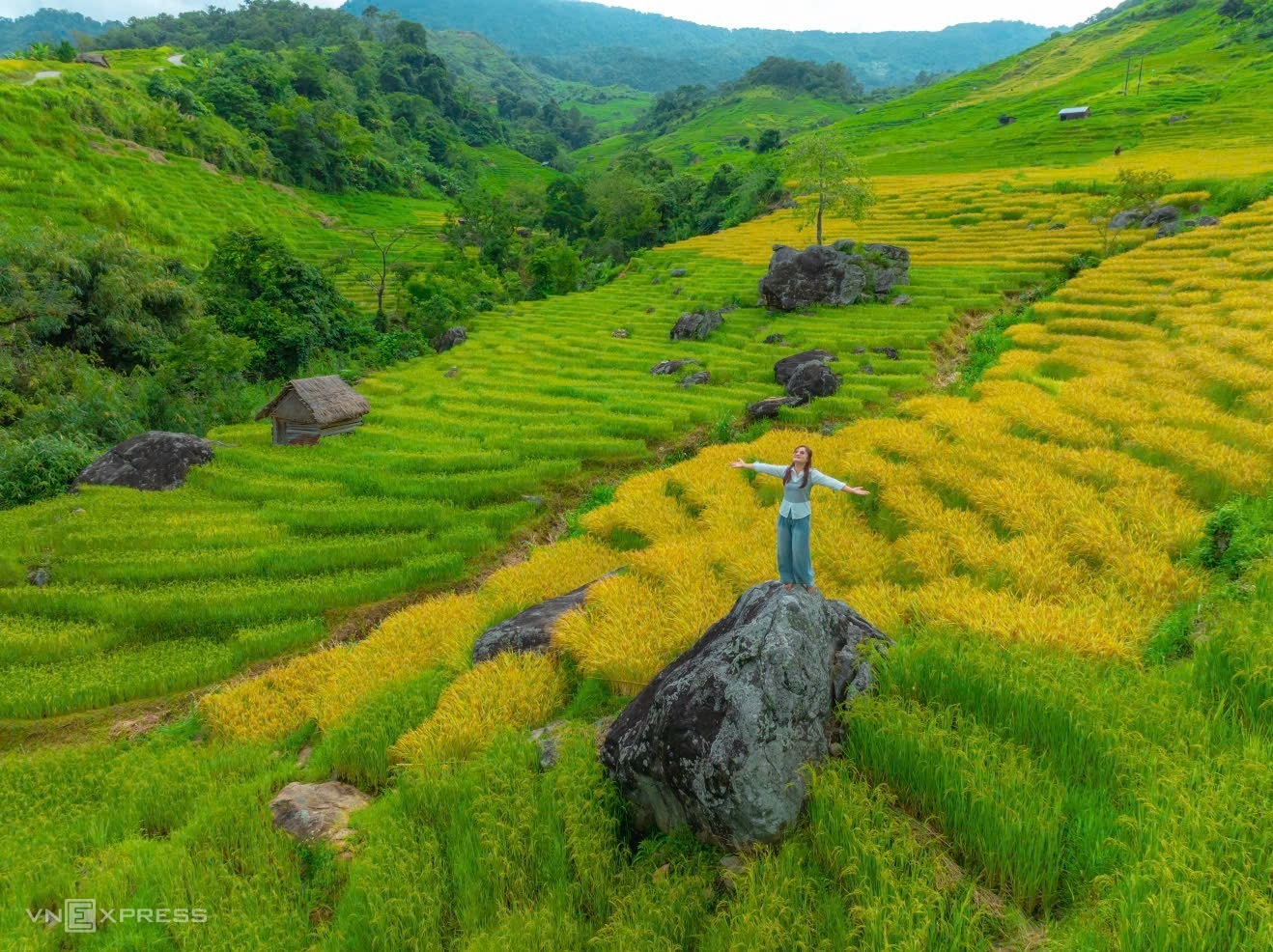 |
Recently, the terraced fields on the slopes of Ngoc Linh mountain have attracted young people who enjoy traveling and making videos of their experiences. Ms. Huyen Ty, a TikToker, said many viewers were surprised that the terraced fields here are as beautiful as those in the Northwest region.
According to the People's Committee of Ngoc Linh commune, the commune has more than 300 hectares of rice cultivation. Associated with rice cultivation, the Xo Dang people also preserve many cultural values such as the New Rice Celebration, where the whole village gathers to offer thanks to the gods for granting rice grains; and the water trough ceremony, which expresses gratitude for the precious water source from the old forest.
Thao Vy











